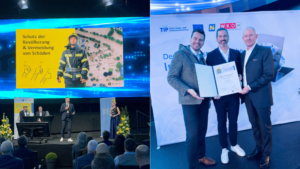The battery runtime is fundamentally dependent on a number of variables and control parameters. You can also influence the runtime yourself with a few settings.
What does the battery life depend on?
- Connection quality
- Number of remote sensors
- Selection of the analogue sensor
- Measuring and recording interval
- Data transmission
Data transmission requires energy. Establishing the connection is also an energy guzzler. If the quality of the connection is poor, it may be necessary to retry several times, using more energy.
The number of sensors that connect wirelessly to the Jellox data logger also affects battery life. If Jellox receives data from several sensors, this requires more energy. The analogue 4-20 mA sensors are also an enormous energy guzzler. The sensors are powered directly from the datalogger, which has a significant impact on the overall battery life of the measurement system.
The number of measurements, recordings and transmissions are other parameters you can use to influence energy consumption. Think about how often you actually need the data. Perhaps it is sufficient to send the data once a day in normal circumstances and only immediately in the event of an alarm?
What battery runtimes are achieved with Jellox?
The following assumptions and measurement parameters are used to measure battery runtimes with Jellox:
- Remote sensor with 10sec measuring and 5min recording interval, 12h data transmission
- 4-20mA sensor with 1sec warm-up time at 5min sampling interval and 12h data transmission
Jellox Basic
(1x remote sensor):
~ 13.5 years
Jellox Pro
(1x remote sensor/ analogue measuring channel):
~ 4.5 years
In comparison, you can see that Jellox Basic with a remote sensor achieves a battery life of well over 10 years. For Jellox with an additional analogue measuring channel, the runtime is significantly reduced to 4.5 years. The power supply for the analogue sensor – which does not require an additional battery – has a drastic effect on the runtime of the entire measurement system.
Jellox Elite
(2x remote sensor/ without measuring channel):
~ 12 years
Jellox Elite
(4x remote sensor/ without measuring channel):
~ 8.5 years
Jellox Elite
(4x remote sensor/ analogue measuring channel):
~ 4 years
Even with two remote sensors, Jellox Elite easily achieves the targeted 10-year lifespan. With four sensors sold, however, Jellox is slightly behind at 8.5 years. In the version with maximum measuring channels (i.e. four remote sensors and one analogue measuring channel), the runtime is reduced to 4 years due to the 4-20 mA input.
Conclusion
As shown, the battery life depends on different settings and can vary greatly depending on the application. However, the measurement examples clearly show that the stated 10-year battery life is not a marketing bluff. The measurement settings are common in our customers’ applications.
When using remote sensors from Microtronics such as the radar sensor or the gauge sensor, 10 years or more is a realistic service life. If an analogue sensor is also used, the measurement system runtime is significantly reduced due to the sensor supply.
Expert tip:
Jellox shows the predicted runtime for the respective measuring system on the display of the device. In addition, the predicted runtime of Jellox and of each individual remote sensor can be seen in the platform.


